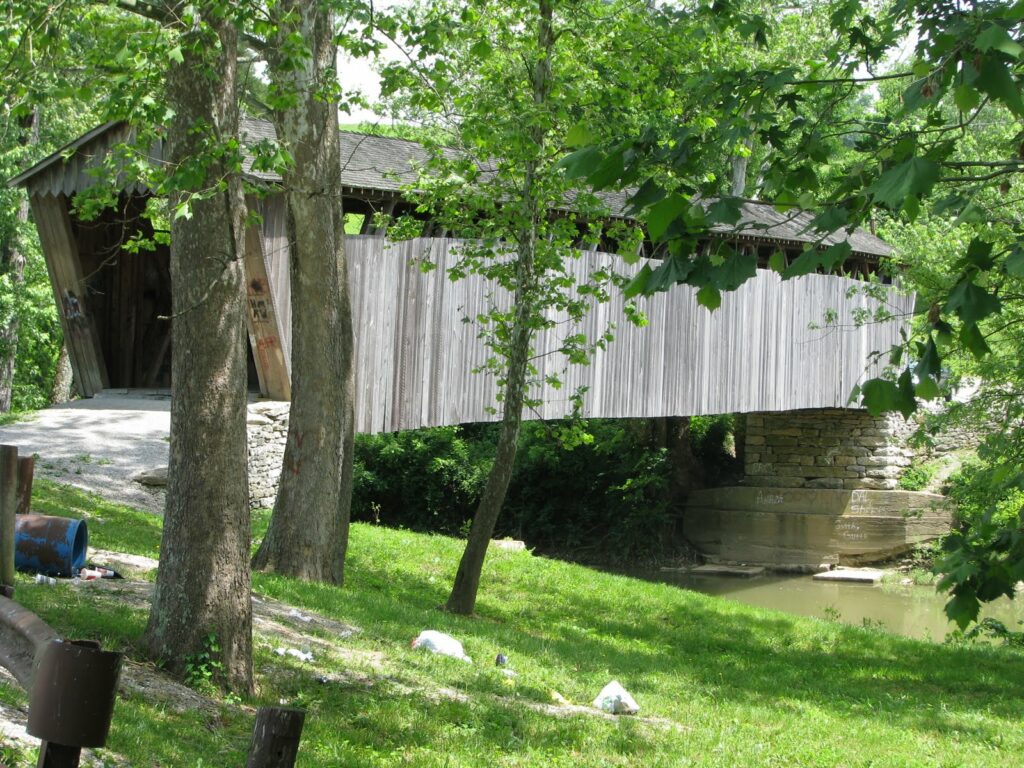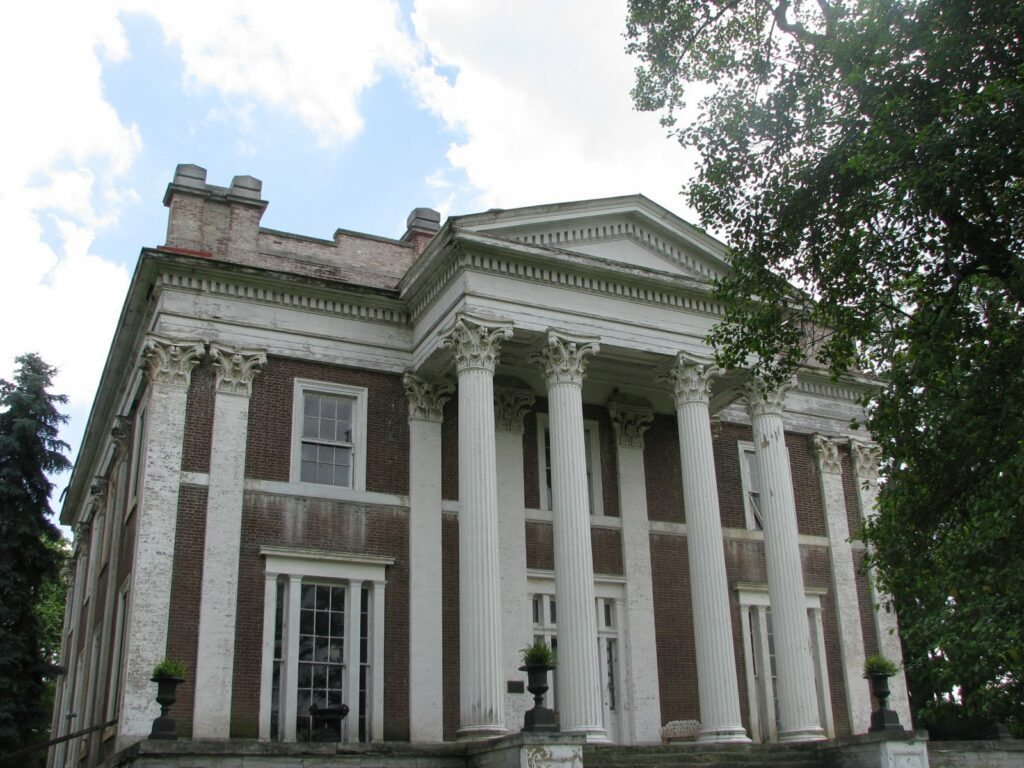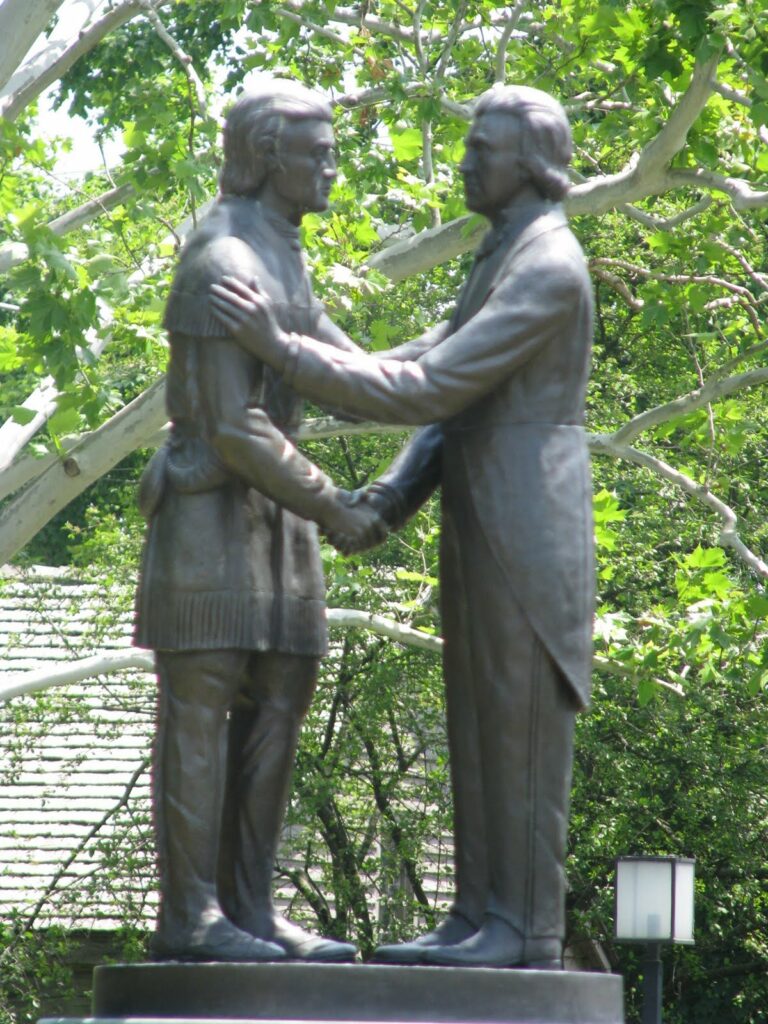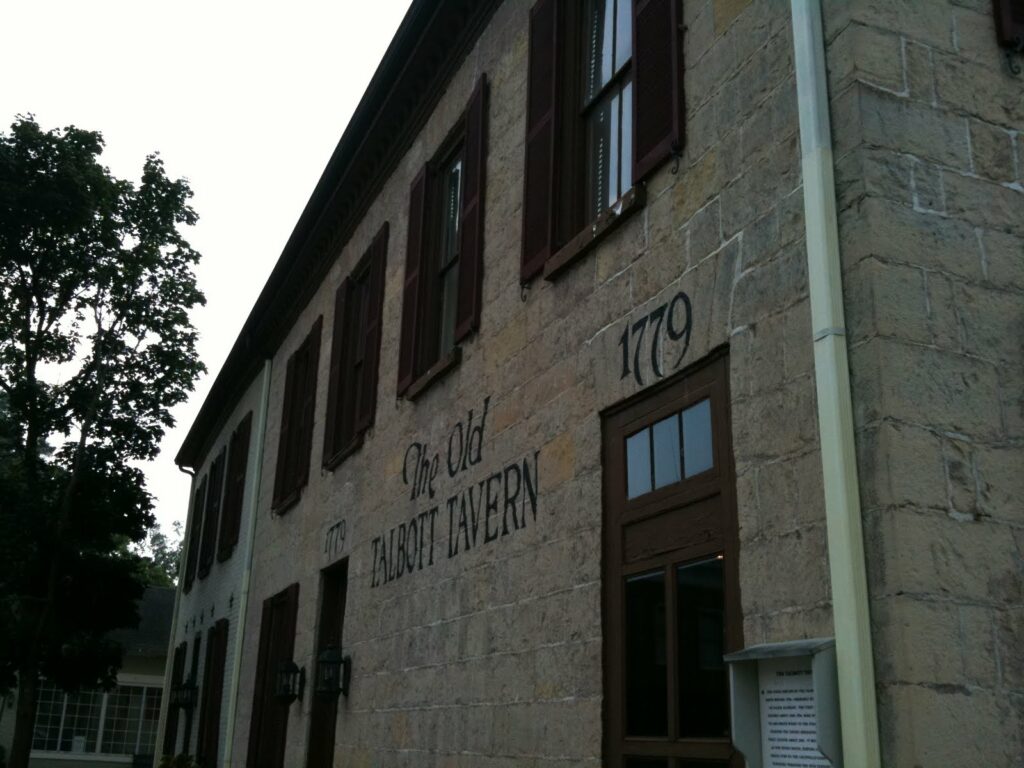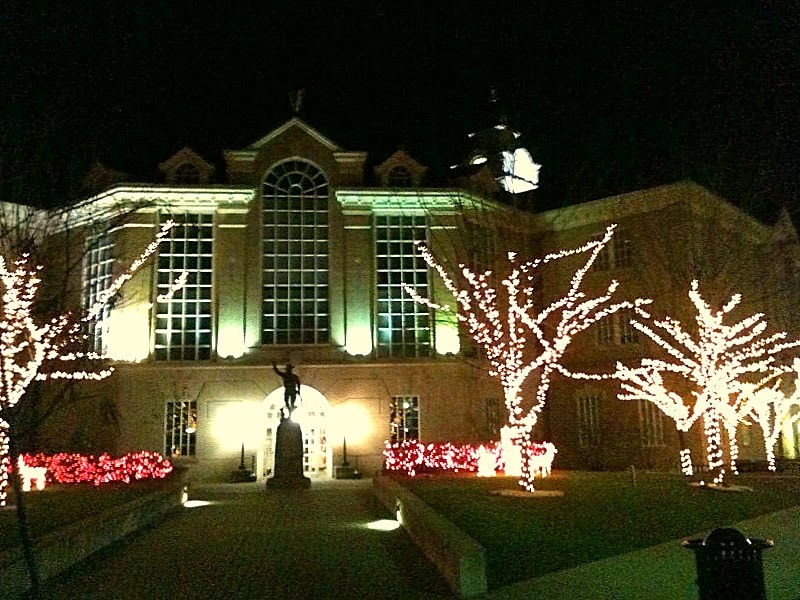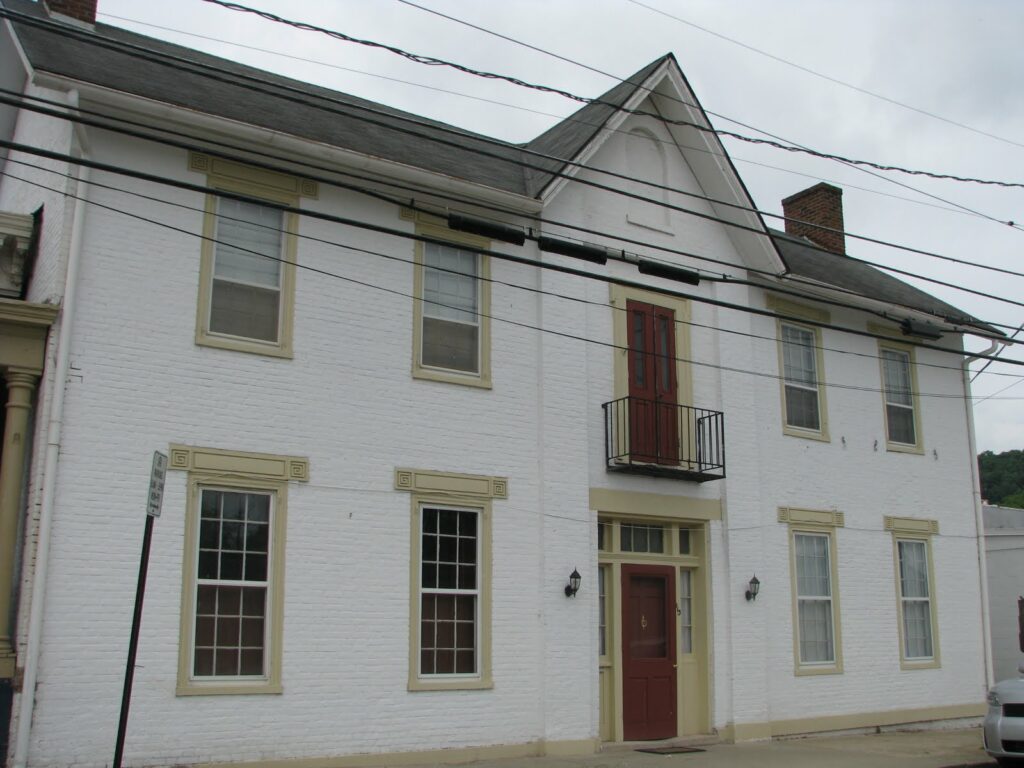 The Danville Presbyterian Church is the oldest Presbyterian Church west of the Allegheny Mountains, having been established in 1784 by Rev. David Rice.
The Danville Presbyterian Church is the oldest Presbyterian Church west of the Allegheny Mountains, having been established in 1784 by Rev. David Rice.
The historic marker outside of the church mentions those who here worshippped:
James G. Birney, whose presidential candidacy in 1844 caused defeat of Henry Clay; John C. Breckinridge, whose 1860 candidacy resulted in election of Lincoln; Samuel D. Burchard, whose “Rum, Romanism and Rebellion” defeated James G. Blaine in 1884. Marker #754.
Rev. Rice actually organized three Presbyterian congregations in what would become the central Kentucky region, though he is most connected with this Danville congregation. Rev. Rice routinely delivered sermons opposing slavery; as a delegate to the 1792 Kentucky Constitution convention he unsuccessfully sought a clause that would have banned slavery in Kentucky.
The congregation moved to its present location in 1831 and a second congregation was begun in 1853. In 1869, the Presbyterian Church split and the two congregations took separate paths. The two congregations eventually rejoined in 1969 and restored this structure before returning in 1996.


